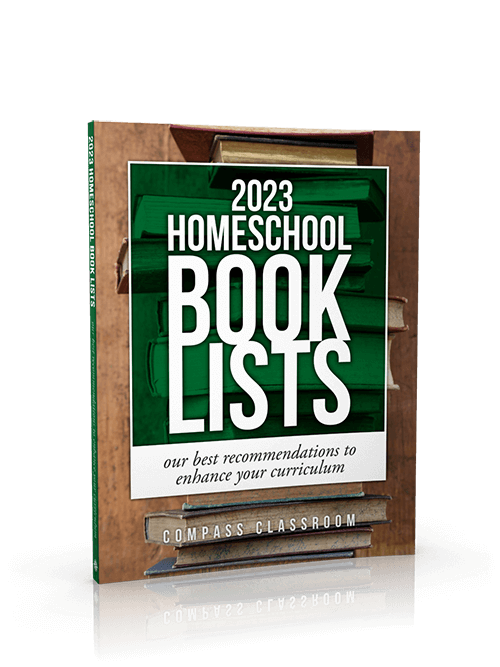
Listen here:
Yay, friends! It’s time to dive into Charlotte Mason’s Principle 5, the three key educational ideas for a more natural and delightful homeschool.
First, let us take a moment to chat about a few things that can be a struggle for us as moms and teachers. We cannot do everything that Charlotte Mason puts in front of us. We are spreading a feast, and we pick and choose what is best for our family and situation.
As Sally Clarkson says in Awaking Wonder,
As pioneers in home education with nothing to compare our experience to, we often struggled and wondered if we were doing enough or if we were succeeding in reaching the heart of each child. All parents feel this way.
We need to rein in the desire to keep adding more and more. Our insecurity is normal, but we cannot let it become detrimental to our children, or our homes.
Each family is unique. Providing our children with a living education while respecting the individual needs of our family and our children is the very best home education we can give. The Charlotte Mason method is a compass that we use to navigate the unique geography of our family, it is not a formula to be followed to the letter.
Rest in knowing that a simply Charlotte Mason style education will give your children the framework for a lifetime of learning.
Charlotte Mason Fifth Principle: Three Key Educational Ideas
Now let’s get started! Our Charlotte Mason Principle Five contains 3 important components of a quality education. If you are just discovering Charlotte Mason’s wealth of wisdom,Charlotte Mason newbies should start here –>> Charlotte Mason 20 principles.
Charlotte Mason Beginning Principles
You may also need a more thorough refresher, so here is an in-depth look for each previous Charlotte Mason principle:
Charlotte Mason Principle 1: Children are Born Persons
Charlotte Mason Principle 2: Good & Evil Nature of a Child
Charlotte Mason Principle 3: The Habit of Obedience
Charlotte Mason Principle 4: Training without Manipulation
The 5th Principle with Three Critical Components
Here is the 5th principle that discusses the three key components to a delightful and engaging educational atmosphere.
The Atmosphere of the Environment
Therefore, we are limited to three educational instruments—the atmosphere of environment, the discipline of habit, and the presentation of living ideas. The P.N.E.U. Motto is: “Education is an atmosphere, a discipline, and a life.
Let’s take a look at the first educational instrument — the atmosphere of environment. What does a Charlotte Mason atmosphere look like?
There’s no need to set up a public school type classroom with expensive manipulatives, posters on the walls, and twaddle books.
You don’t need to purchase “child size” tools, toys, etc. to create a “friendly” environment.
You don’t have to create school at home.
It’s not necessary to set up a facade of any educational environment, instead, use the beauty of our world and the sacred space of your home for your amazing learning center.
The outside environment holds a feast of educational ideas for learning. Here are some ideas to try if you need a little jumpstart:
- Start a Garden
- Explore the beauty of music, art, and poetry
- Begin a Nature Study using books and birds
Fill your home with quality books that contain big ideas, history, poetry, beautiful prose, and tales well told. Let music fill and art adorn your home. Let your home be a place that inspires curiosity and a love of learning. Let deep conversations and meaningful connections be the glue that binds your family together.
The atmosphere of learning is a rich one. Truth, goodness, and beauty abide there and welcome the child with open arms.
The Discipline of Habit
What you would have the man become, that you must train the child to be. – Charlotte Mason, Parents and Children
Habit training is by far one of the most effective ways to have a successful homeschool, smooth and easy days, and to encourage your children to become responsible persons. Charlotte Mason contends habits are a critical component of education.
In the article, Charlotte Mason Habit Training with Consistency, it discusses why consistent routines are important, how to instill good training in habits, and how to use teachable moments for lifetime successful results.
Education as a discipline is a very intentional way of saying that to become a true self-educator (the goal of a CM education), one has to be disciplined/determined/dedicated to the constant quest for knowledge and wisdom; developing their discernment muscles from their earliest observations in nature as a young child guided by loving and nurturing parents through their post-graduate studies and beyond.
Which leads us to the third key idea.
Education is a Life
We have left until the last that instrument of education implied in the phrase ‘Education is a life’; ‘implied’ because life is no more self-existing than it is self-supporting; it requires sustenance, regular, ordered and fitting. This is fully recognised as regards bodily life and, possibly, the great discovery of the twentieth century will be that mind too requires its ordered rations and perishes when these fail. – Charlotte Mason, Towards a Philosophy of Education
Is presentation of living ideas really feeding the mind?
Absolutely!
Education is life-giving when the mind is fed upon great ideas regularly. The ideas should be presented in an appropriate manner for the student’s age and ability, and they should be presented in an orderly manner – that is to say there should be a reason and general curriculum in use to keep things flowing along rightly.
Ideas – as a little note we will dive more deeply into later – are not facts. Facts can surround an idea like wrapping paper, but the idea itself is the gift inside.
For example, the George MacDonald book Phantastes inspired C.S. Lewis long before he came to faith. One idea that might be extracted from that fact is that a faithful person who shares Truth through writing great literature can have an impact for many generations beyond their own.
Miss Mason did not allow for rabbit trails during lesson times, but made sure the afternoon hours were free for the students to pursue their own interests and delve into the wonders of the natural world and afternoon occupations.
Here are some examples on how you can have a feast of ideas that are natural, encourage independent learning, and instill healthy habits.
- Keep a bible by their bedside for independent reading
- Have a plethora of Charlotte Mason free reads on a shelf in the living room and in their room (no twaddle, please!)
- Bake a cake together and present it after dinner as a surprise for the family
- Set the table for tea time each day after school time
- Create a Morning Time schedule that includes all the riches
- Set aside a consistent time each day to go outside and explore and enjoy creation
- Write a list or create a scavenger hunt using a book or finding native insects
- Do a nature study on a native bug
These practical tips are just the tip of the iceberg when it comes to building Charlotte Mason ideals into your homeschool.
What has been successful for you in your Charlotte Mason homeschool? What ideas could you share with your fellow Charlotte Mason fans? We’d love to hear them!
If you are looking to implement more Charlotte Mason methods into your homeschool with simplicity and ease, The Homeschool Garden morning time curriculum might be just what you’re looking for! Learn more about The Homeschool Garden membership or browse the individual sessions available here.










Leave a Reply